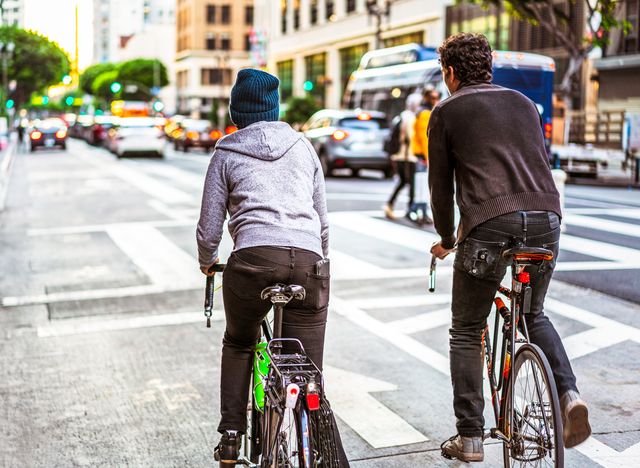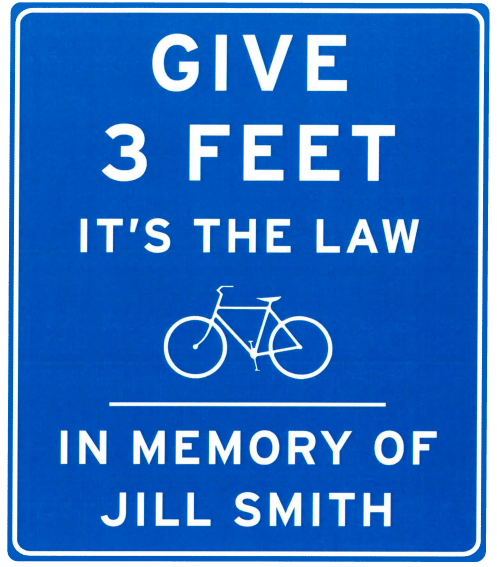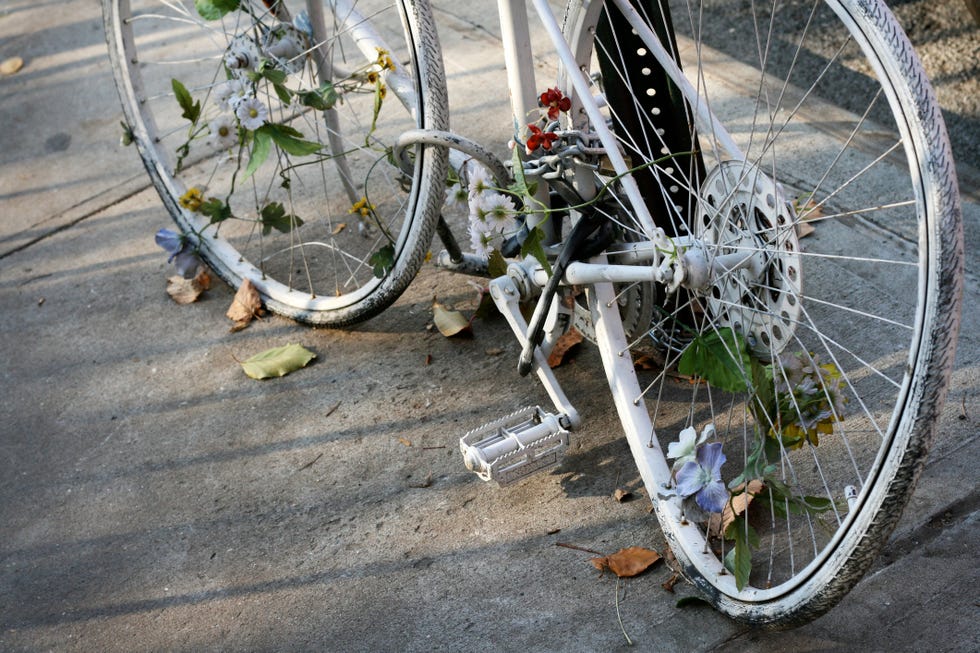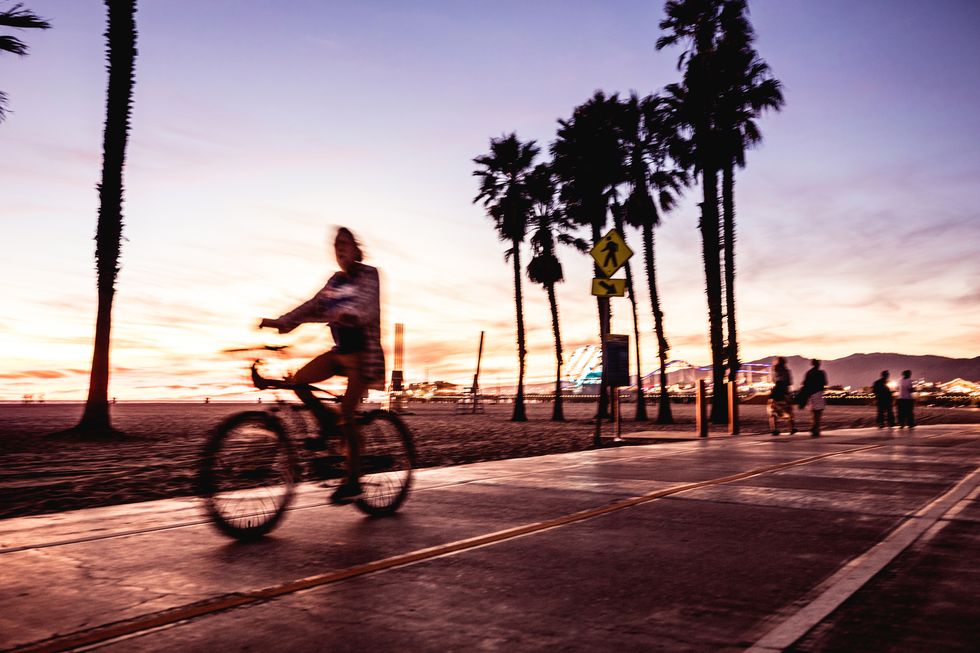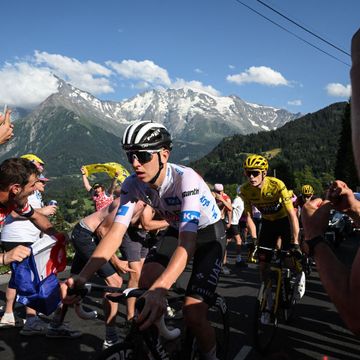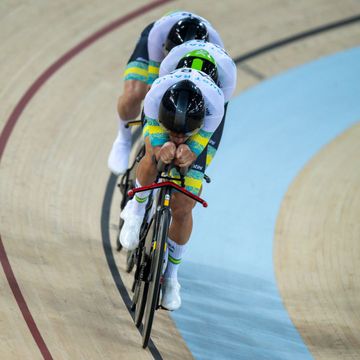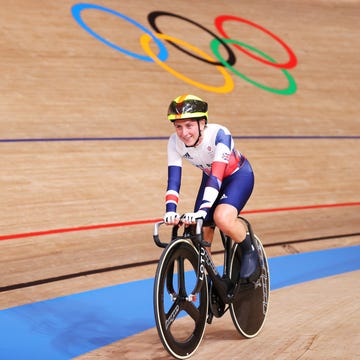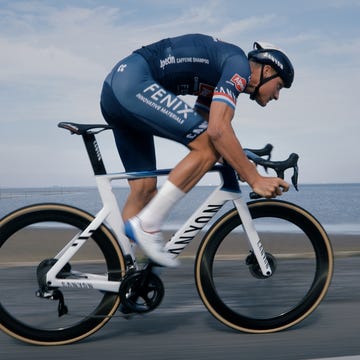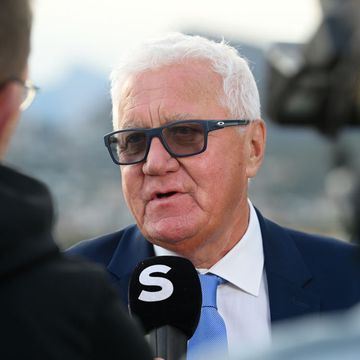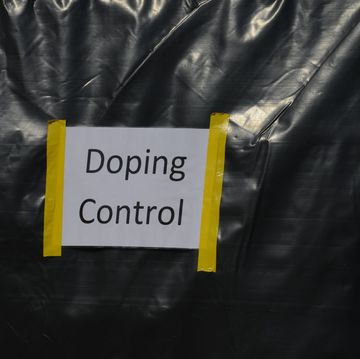- Los Angeles will install permanent memorial signs to honor cyclists killed in crashes on city streets.
- The signs will include traffic safety PSAs as well as the names of victims.
- They’re part of the city’s plan to eliminate traffic deaths by 2025.
Ghost bikes, those eerie roadside tributes to cyclists killed in traffic, are a somber but common sight. They are also largely unsanctioned: Typically, cycling activists, or friends and family of the rider, will put up the makeshift memorials without asking permission from local officials or nearby property owners. (Sometimes, this leads to feuds over who gets to take the ghost bikes down.)
Now, Los Angeles wants to pay tribute to fallen cyclists with permanent, officially endorsed markers—although these will be street signs, not whole bicycles painted white.
The L.A. City Council this month approved a program to begin installing memorial signs to honor cyclists killed in crashes on city streets. The motion, first introduced by Councilmember Bob Blumenfield, will direct the City’s Transportation Department to fund, build, and maintain the signs.
While bearing the names of victims killed at the site, the signs will also serve as public safety announcements, telling drivers to “Watch Your Speed” and “Don’t Text and Drive,” among other directives. They come as part of the City’s Vision Zero initiative, a plan (borrowed from Sweden and adopted in big cities worldwide) to eliminate traffic deaths through better laws, infrastructure, and street design.
According to official counts, more than 160 cyclists died on the streets of L.A. since 2003. Twenty-one were killed last year—among them 15-year-old Sebastian Montero, struck and killed by a driver in Blumenfield’s own district.
“We have a lot of work to do in Los Angeles to make our bike network safe and effective,” Blumenfield said. “It’s an expensive and long proposition to do it right, but I am committed to doing it.” For L.A., the target year for achieving Vision Zero is 2025.
Rich Hirschinger, director and president of Velo Club La Grange, the largest cycling club in Southern California, said he supports the signs. But he added that a lot more must be done in a city like L.A., which Bicycling last year called America’s “worst bike city,” to reduce traffic deaths.
“It absolutely should be tried,” he said. “I think something visual like that can’t hurt, but I still think there is a general feeling that cyclists don’t belong on the road with cars.”
Hirschinger, who said he’s twice been hit by drivers while riding in Los Angeles, has spent years advocating for safer streets. Most recently he lobbied for adding bike lanes along the highly trafficked Santa Monica Boulevard through Beverly Hills. He said it took years and an election cycle before officials finally approved the lanes.
“I think what we have seen is a lot of words, but when it comes down to actions, I don’t know if it’s actually going to change,” Hirschinger said.
Blumenfield admitted that the work of making city streets safe for cycling goes well beyond signage.
“I don’t want to leave anyone with the impression that signs are going to solve our problems,” he said. “It’s got to be a focus on improving our infrastructure, connecting all of our bicycle network… Doing all of those critical things are part of making this city a more bike-friendly and bike-safe place to travel, and live and work and play.”
Eli Akira Kaufman, executive director of the Los Angeles County Bicycle Coalition, said the signs could still play a vital role, serving both as touching tributes to the deceased and ways of raising awareness among drivers.
“There has been talk of making ghost bikes permanent somehow for a while now, and this program is a good way to honor the memory of the people who were killed and send a message in the process,” Kaufman said.
The new signs will not replace Los Angeles ghost bikes, which the City generally allows as temporary installations. The Transportation Department will add memorial signs at the request of victims’ families.
“With a lot of things, I like to think we lead in Los Angeles,” Blumenfield said. “We like to create new ideas and hopefully, if we are successful, other cities will adopt it as well.”
